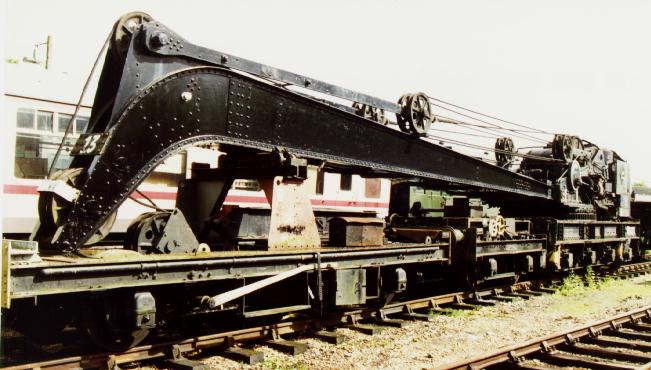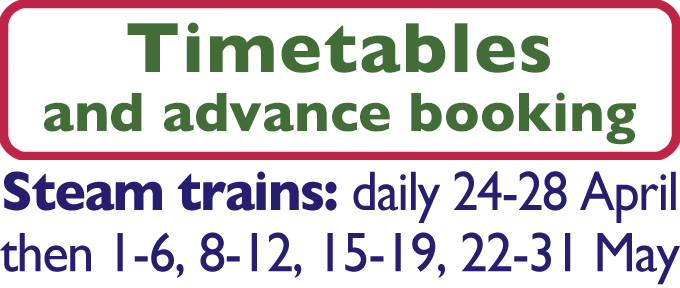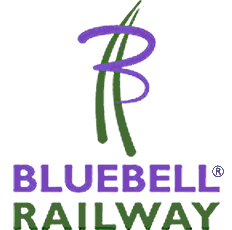The railways in Great Britain used to be far busier
than they are today, as the industry used to carry a wider range
and a vastly higher percentage of the commodities which were
transported nationally. There would be regular shunting of
passenger and parcels carriages coming in to a yard to make up
the outgoing services. Goods trains had to be formed up or
re-marshalled to allow individual wagons to reach their required
destinations by the quickest available service and to dispatch
empty wagons to stations where they were required.
Much of the goods shunting was "loose", where a locomotive
would propel a vehicle or vehicles up to a sufficient speed, then
stop, leaving the wagons to roll down the sidings under their own
momentum. Shunting staff would switch the points ahead of the
wagon(s) and run after them to apply the handbrakes. Some yards
(like Norwood Junction) had a slight man-made gradient on the
approach to sets of sidings known as a "hump". This gave the
wagons a slightly more controlled approach speed (This should not
be confused with the more modern, remote-controlled hump
marshalling yards like Temple Mills (Stratford) and Tinsley
(Sheffield)).
Collisions and derailments frequently occurred; injuries did
too but were, thankfully, less frequent. Another contributory
factor was that the track in yards would have been at least,
secondhand and generally had the minimum amount of maintenance.
The overwhelming majority of derailments and other incidents did
not involve passengers and occurred within yards or sidings clear
of the running lines. These were known to be "Inside Clear" by
railway staff.
If, say, Hither Green yard was obstructed by a derailment,
some additional traffic would have to be diverted to Norwood
Junction causing congestion and delay. These, all too frequent,
derailments had to be dealt with as quickly as possible. Clearing
any blockage of running lines was, however, a far greater
priority and until fairly recently, the railway industry had to
provide its own recovery service. Hand-operated jacks and towing
gear were carried on tool vans which were strategically located
at certain locomotive depots. Additionally, some sheds also
boasted a steam-powered breakdown crane.
The crane boiler would be kept alight at all times unless it
was under maintenance. One of the volunteer crane drivers
(usually a Cleaner grade) would be rostered each shift to check
the fire. The cranes were manned by members of a volunteer gang
who would either be taken off-shift when working or called at
home out of hours. These cranes were often called upon at
weekends to assist with programmed bridge replacement work for
the Civil Engineering Department. However, the driver and crew
would be from the regular Motive Power Dept. roster.
The situation in 1960 (as an example) saw the larger part of
the Central Section of BR's Southern Region (south of Redhill)
covered by a 36 Ton capacity steam crane based at Brighton loco
shed. The London area was served by a similar 36 Ton crane at
Bricklayers Arms and a 15 Ton crane at Stewarts Lane. The
Tonbridge to Redhill line was covered by a 36 Ton crane based at
Ashford. Parts of the western side of the Central were covered by
cranes at Eastleigh (36 Tons), Nine Elms (45 Tons) and Guildford
(45 Tons). Each of these cranes had at least one tool van while
independent tool vans were based at Fratton, Norwood Junction,
Redhill, Three Bridges and Tonbridge.
These large cranes are rated by their maximum lifting
capacity. At that time, the 45 Ton crane was the largest
available on the national network and our crane is of this
rating, this being what it can lift when the jib is in a
near-vertical position. The capacity is rapidly reduced
(ultimately to about one ton!) when the jib is approaching
maximum radius (at a more gentle angle to the ground). The
lifting capacity is also severely reduced if the crane has to
work "unpropped" or to travel while carrying its load.

RS 1083/45, Richard Salmon
History of Our Crane.
RS1083/45 is one of two cranes ordered in 1942 by the Ministry
of Supply for the LNER, as replacements for two LNER cranes
(951515 and 941600) which were previously requisitioned by the WD
in 1941 and sent overseas. It was supplied as part of Ransomes
and Rapier Ltd. (Ipswich) works order F4991-3. The other
replacement crane became ADRR95214, now preserved on the
NYMR.
Our crane was delivered in 1943 and allocated to Gorton, it
carried various LNER numbers - 951516 (with match wagon numbered
951676), 122, then (DE)330122 (the LNER kept renumbering cranes
in a rather confusing way). It was transferred to BR(E) stock in 1948,
and was renumbered RS1083/45 at some point, but was still lettered
"No.122" in 1958.
Throughout this time it remained allocated to Gorton, and was
transferred to the L.M. Region in 1960, still at Gorton. In 1965
it was transferred to Newton Heath, where it remained until
withdrawal on 1st. July 1981. At the time of withdrawal, it
carried the number ADRR95215.
The unit comprises the crane itself, a match truck to support
the jib and two "Stokes bogies" (the small weight-relieving
trucks found either end of the main crane unit). These support
some of the weight of the crane when it is travelling to and from
site in order to reduce the axle-loading. When the crane is
working, the full weight of the crane is returned to the crane
unit or "carriage". Four heavy outrigger "props" are contained
within the carriage. These are normally extended fully and
screwed down against wooden packing, lots of which would have
been carried in the tool van and possibly on the jib runner. This
gives the crane its maximum "block base" and allows it to work at
its full rating. The crane can propel itself, although only
slowly. All the power comes from the two cylinders on the body
sides via a series of gears and dog-clutches.
To all practical intents and purposes, ADRR95214 and ADRR95215
were identical to six cranes supplied by Ransomes and Rapier in
1940, the only significant differences being in the configuration
of the jib runner tool lockers. These six cranes were ordered on
the Government account for the GWR (4) and SR (2) as a war
precaution and they were designed for use anywhere in the UK or
abroad. A 15 ton axle loading and an envelope that conformed to
the British Composite Loading Gauge allowed them to run anywhere
in the UK, including through London if necessary.
History on the Bluebell Railway.
ADRR95215 was sold from Newton Heath (Greater Manchester) to
the Bluebell Railway for £6250. It arrived at Sheffield
Park between 5th. and 7th. November 1981. The crane was in good
working order when made redundant at Newton Heath, but
unfortunately insurance regulations required all steam parts to
be totally dismantled for inspection merely because ownership had
changed.
The crane was initially returned to service during 1985, with its first
public engagement being the 25th Anniversary cavalcades on 13/14 July 1985,
where it self-propelled through the station at Horsted Keynes as one of the
Cavalcade exhibits. It worked for the length of its 5-year boiler certificate,
the boiler being inspected and certificated for a further 5 years in 1990.
During the years that the crane was in operation, work was performed for most
departments. Among the jobs that were undertaken were:
Removal of signal post on Freshfield bank
Erection of balloon water tank in Horsted Keynes down yard
Removal of huge tree bole (post hurricane) from the crushed remains of
the PW hut in Rock Cutting
Lifting of carriage underframes at Horsted Keynes, working in
conjunction with the hand crane
Assisting with the installation of the track layouts at both ends of
Horsted Keynes station
Lifting track from platform No.1 at Sheffield Park
Dealing with a derailment
Locomotive lifts.
The strengthening work on New Road road underbridge at Horsted Keynes
required the crane to lift hundreds of tons of concrete in 5 ton bucket
loads to form a concrete bridge over the existing bridge, as a suitable
concrete pump was unavailable at the time.
Following the expiry of its boiler certificate in 1995, it was moved to
Horsted Keynes where one of Stokes weight-relieving bogies was overhauled.
Regrettably, the perennial difficulty over siding space raised its head at
that time and the crane was moved to Kingscote in 1999, where no work could be
carried out on it until it was moved back to Horsted Keynes in February 2012.
It had been envisaged that a new siding would be laid allowing the crane to
return to Sheffield Park, but the Woodpax development now seems to have
precluded this.
When this crane was purchased by the Bluebell Railway, steam
or diesel powered breakdown cranes were based at Brighton,
Stewarts Lane, Ashford, Wimbledon and Eastleigh. An ex-breakdown
diesel crane was based at Horsham in connection with substation
and other power supply work. When this page was written in 2007,
there were hardly a handful of railway breakdown cranes on the
whole national network, with the one covering "the south-east"
being based at Old Oak Common EWSR depot on the former Western
Region. In 2012, cranes were based at Bescot (West Midlands),
Knottingley (West Yorkshire) and Wigan (Greater Manchester), with
one spare to cover maintenance/repair
It is hoped that, even if the railway breakdown crane is
considered to be one of the dinosaurs of the railway business,
our example can at least be returned to public view in order for
its story to be told to generations! To this end an appeal was
launched in 2012, and the crane moved from Kingscote to Horsted
Keynes.
To facilitate grant applications, ownership of the crane has been transferred to The Bluebell Railway Trust.
More details of the Appeal
and restoration plans are available here.











